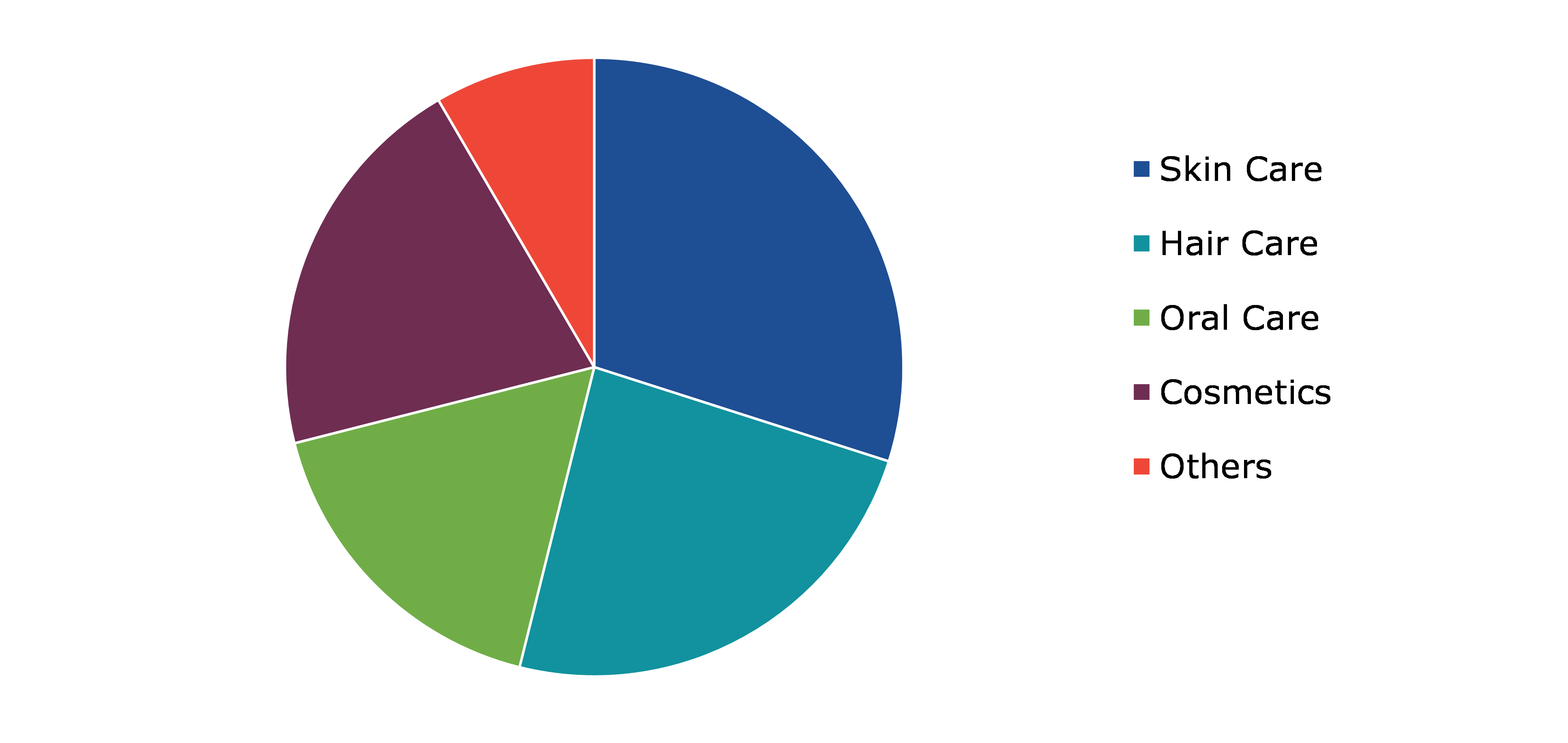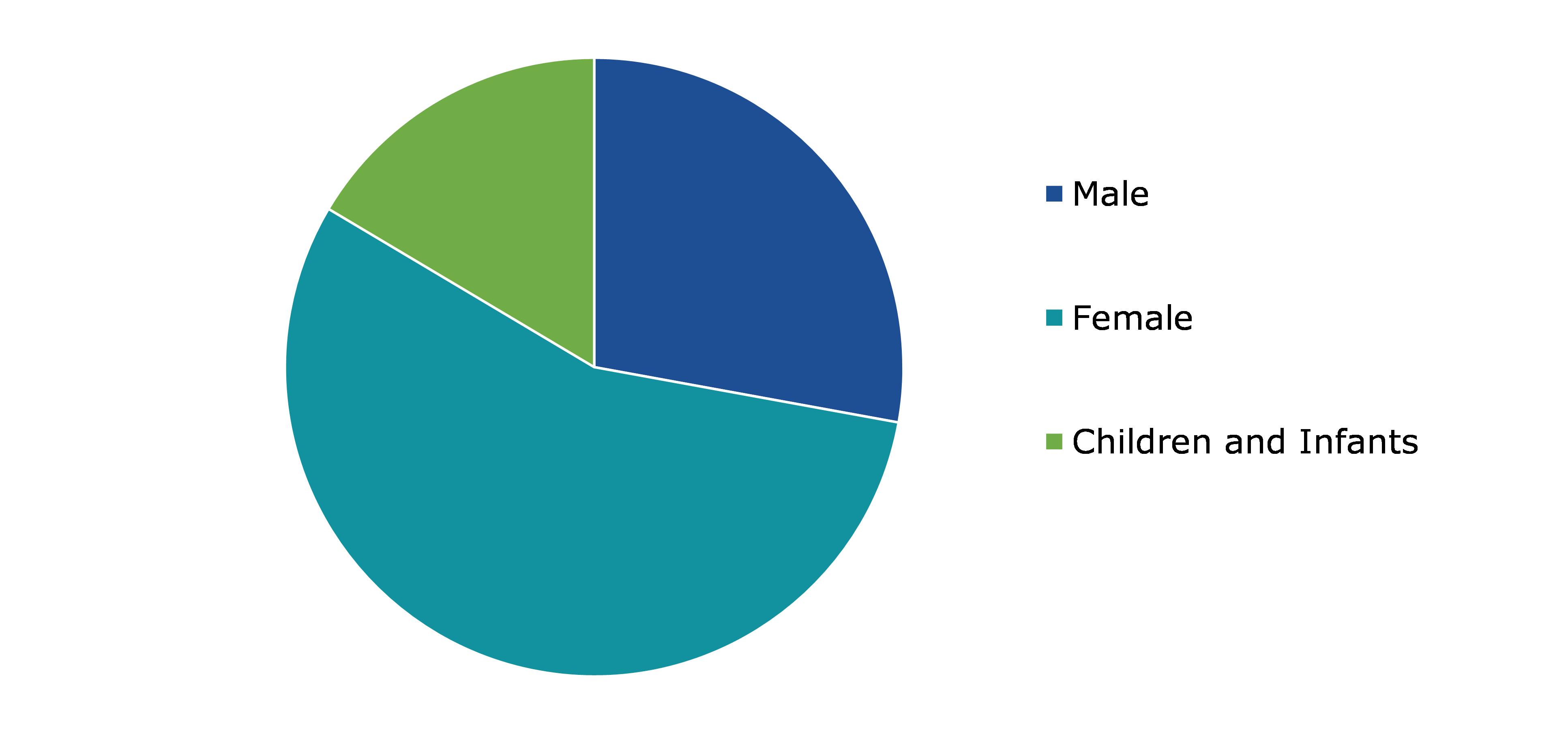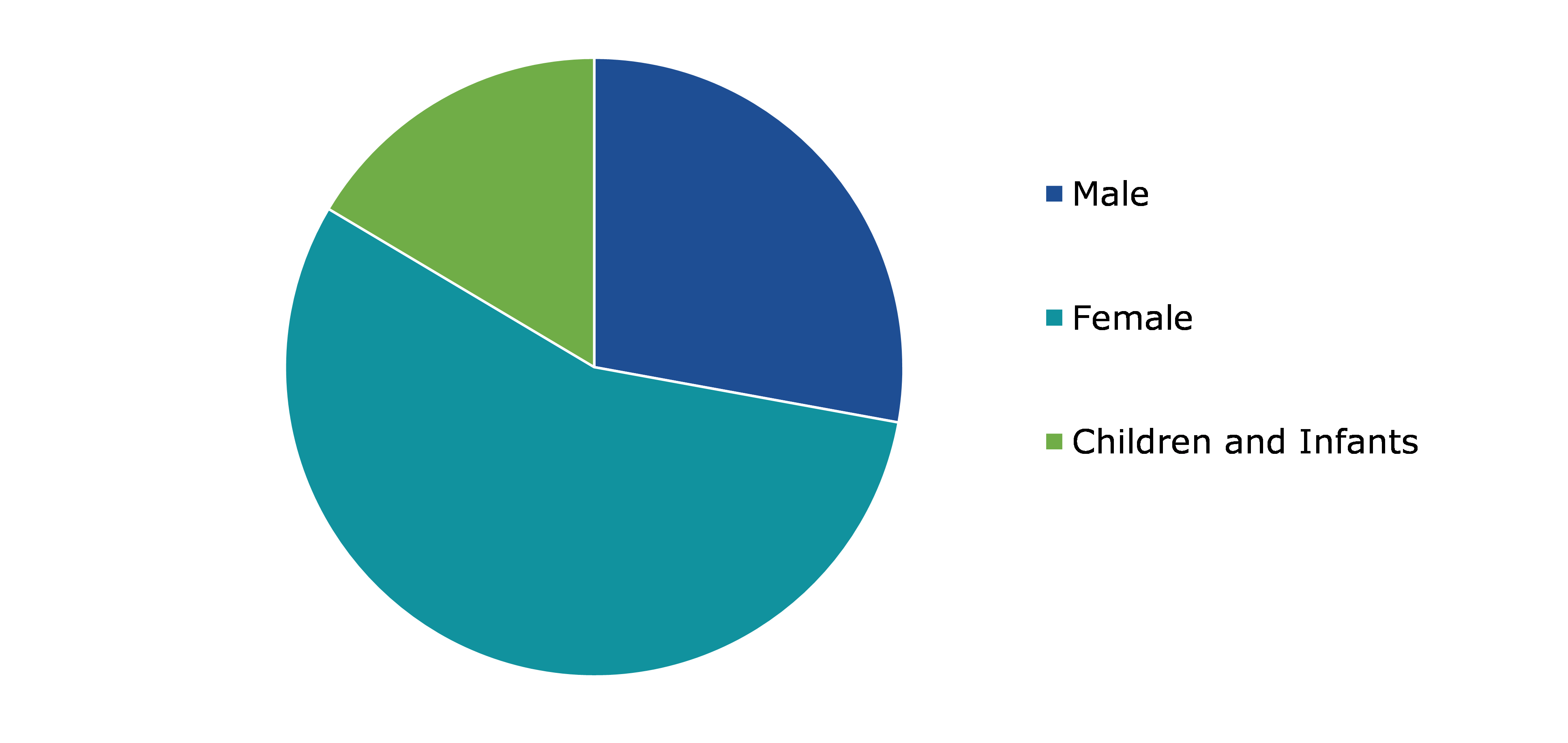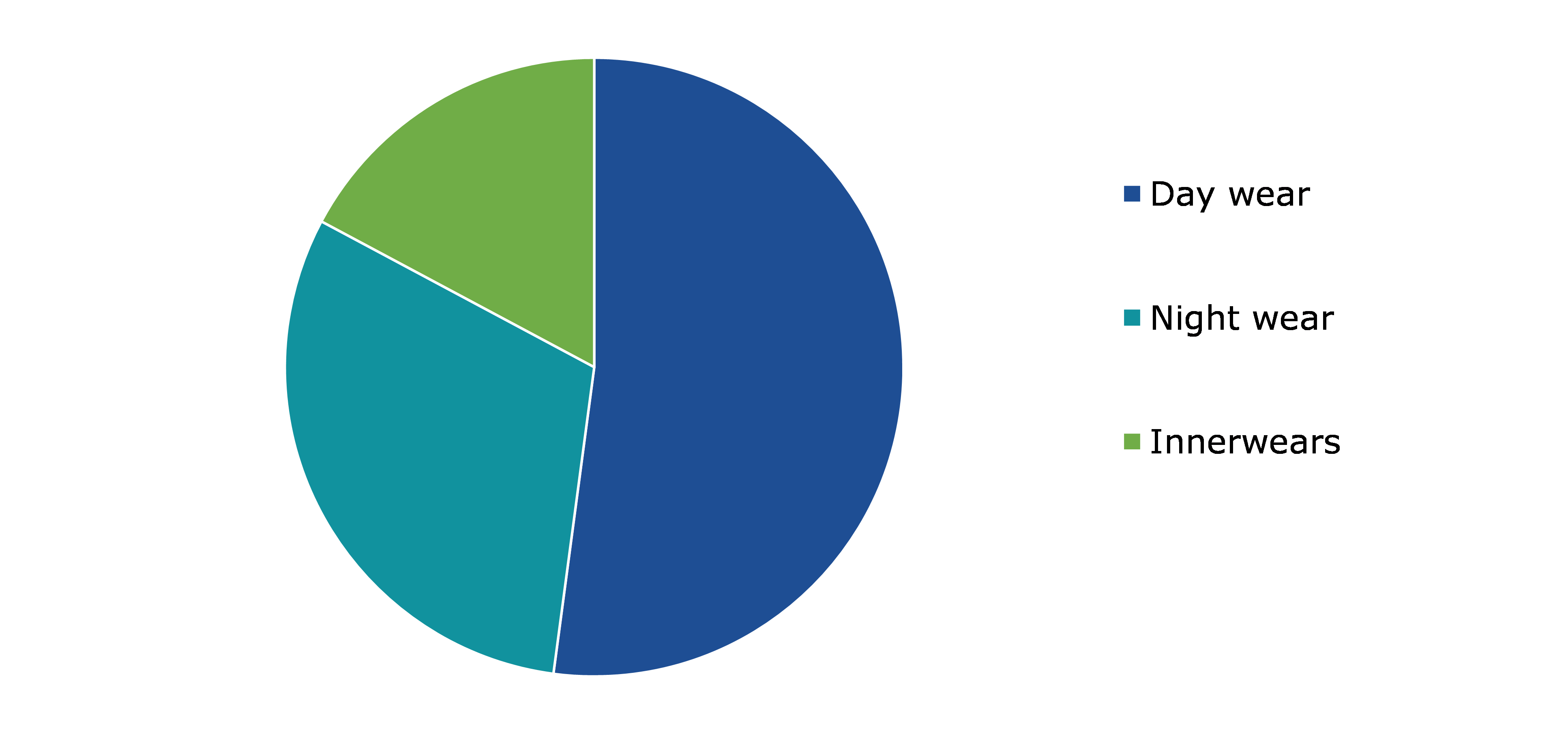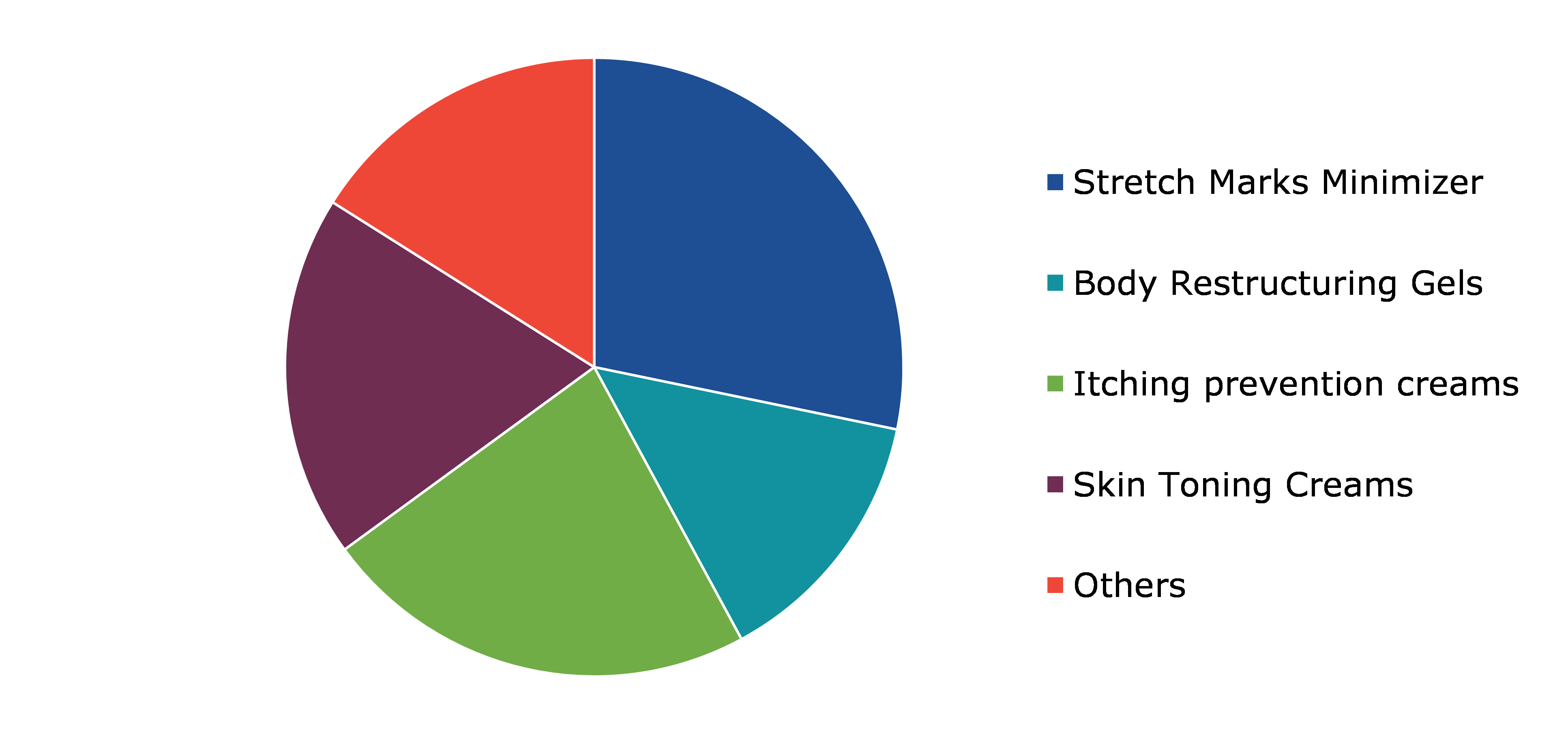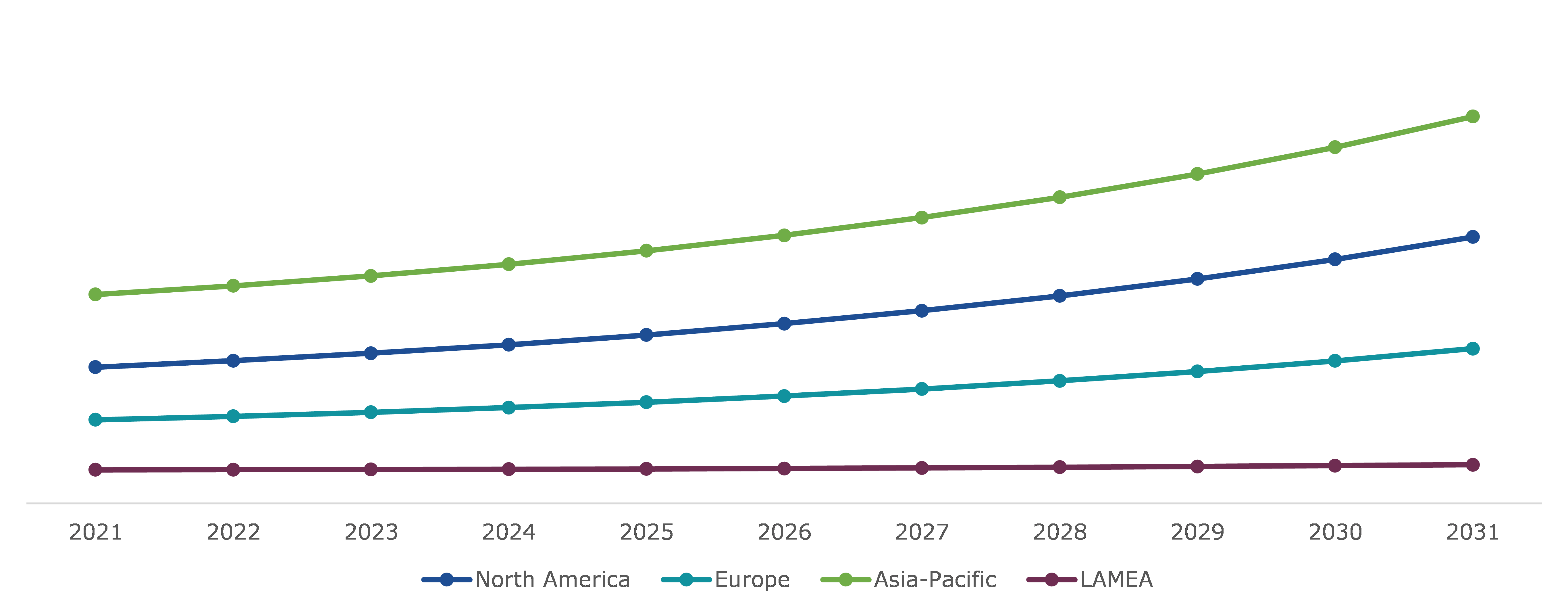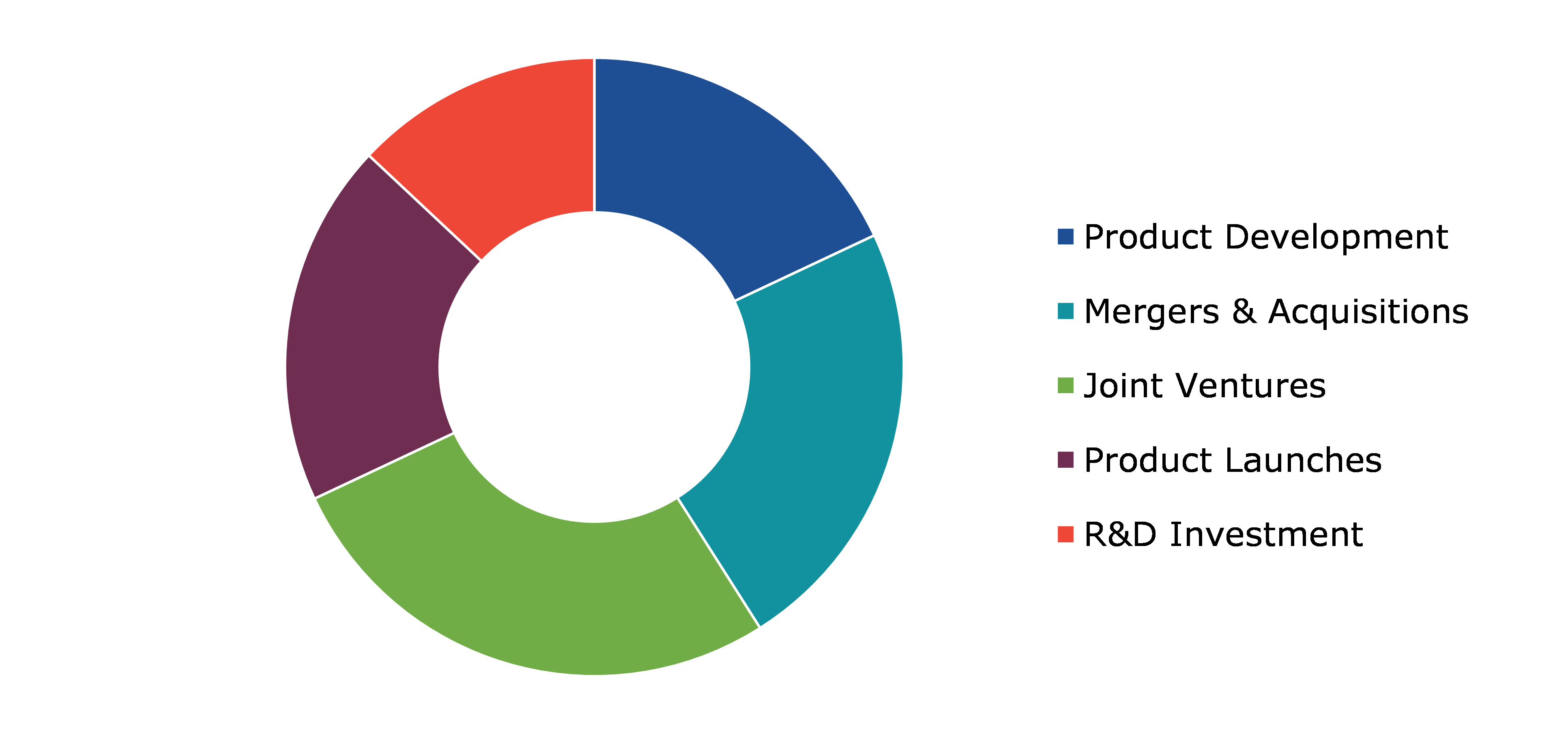Maternity & Personal Care Market Report
RA08614
Maternity & Personal Care Market, by Product Category (Skin Care, Hair Care, Oral Care, Cosmetics, and Others), End User (Male, Female, and Children & Infants), Maternal Apparel (Daywear, Nightwear, and Innerwear), Personal Care (Stretch Marks Minimizer, Body Restructuring Gels, Itching Prevention Creams, Skin Toning Creams, and Others), Distribution Channel (Supermarkets & Hypermarkets, Convenience Stores, Online, and Others), and Region (North America, Europe, Asia-Pacific, and LAMEA): Global Opportunity Analysis and Industry Forecast, 2022-2031
Global Maternity & Personal Care Market Analysis
The Global Maternity & Personal Care Market Size was $58,137.5 million in 2021 and is predicted to expand at a CAGR of 6.5%, generating a revenue of $106,499.9 million by 2031.
Global Maternity & Personal Care Market Synopsis
The personal care industry is one of the world's fastest expanding consumer product industries. The global personal care and cosmetics market has continued to grow strongly, with increasing display space in retail stores and boutiques around the world. The ease with which these cosmetic items are available through various sales channels such as specialty stores, pharmacies, and beauty salons has contributed to the market expansion in terms of revenue growth. Furthermore, the growing emphasis of male customers on skincare and grooming to improve their physical appearance and skin care is expected to provide significant potential prospects. Increase in investments in R&D of new and effective offerings is also impacting positively the market growth.
The threat of reactions and allergies on the skin and body among people owing to the high use of chemical personal care products like creams is likely to impede market growth during the forecast period. Also, the high cost of organic personal care products is likely to restrain the maternity & personal care market share growth as not many people can afford high cost products.
The influence of organic and natural personal care products on consumer buying behavior is likely to propel the market growth during the forecast period. People now prefer to use organic and natural skincare, hair care, and other personal care products as these products do not include chemicals and are completely safe for use. Thus, many beauty product brands have introduced a new organic product catalog in their portfolio to cater to their consumer’s rising demands. These factors are expected to create several growth opportunities for the key players operating in the market in the future.
According to regional analysis, the North America market is predicted to expand at the highest CAGR during the forecast period. The market will expand significantly as a result of the presence of many companies in the personal care business and their wide range of products available in the market to cater to the growing demand of people for high quality personal care products.
Maternity & Personal Care Market Overview
Maternity & personal care products comprise of a wide range of cosmetics, skincare products, oral care products, maternal products, and others. As the standard of living of people across the world is increasing significantly owing to factors such as a rise in per capita income, an increase in affordability, and a rise in awareness among people. Young and middle-aged women are more inclined towards buying and using personal care products which best suit their preferences and utility. Also, a variety of products are available in the market to cater to various maternity related issues such as itchiness, back pain and body ache, swelling, and stretch marks.
COVID-19 Impact on Global Maternity & Personal Care Market
The global industry's workflow was hampered by the COVID-19 pandemic. Numerous industries, including segments of consumer goods like cosmetics, were forced to temporarily suspend operations as a result of the rise in infections. To contain the spread of the COVID-19 infection, many governments throughout the world imposed stringent restrictions on travel, social gathering, and transportation. The implementation of the lockdown prevented customers from shopping in physical stores. The maternity & personal care market had a prolonged slowdown due to issues such as limited operations in most industries, and a disrupted supply-demand chain. During the pandemic, many beauty and personal care essential enterprises preferred social media and e-commerce channels to reach consumers and sell their products. Also, people across the world changed their shopping behavior and stocked up their inventories and homes with several essential products such as oral care, tissue papers & toilet rolls, health supplements, and others. Thus, this panic purchasing behavior of people, globally, affected the demand and supply of goods and services and negatively impacted the maternity & personal care market share growth.
The increase in consumer awareness followed by the COVID-19 pandemic is predicted to increase the demand for personal hygiene and homecare goods. According to manufacturing businesses, the pandemic has increased consumer awareness of the importance of maintaining personal and household hygiene in order to lower the risk of infection. Even if there are difficulties with supply for beauty items and cosmetics, businesses are emphasizing more on expanding their personal care and home care product lines in addition to wellness products. In addition to the increase in the distribution channels, almost all of these businesses have planned new products and category expansions for their existing brands.
Increase in Awareness among People About their Personal Health & Hygiene to Boost the Market Growth
A rise in awareness among people and pregnant women about the importance and necessity of maintaining good health and hygiene is expected to drive the maternity & personal care market share growth during the forecast time. Also, the increase in the number of working professionals, especially women and their growing affordability for expensive yet healthy products like supplements is further anticipated to generate huge market revenue. Several personal care products such as oral, skincare, hair care, and others are available in the market. Thus, people have more access to purchase different products of their preference. Apart from the variety of products in the personal care segment, the companies’ sales channel network is also very strong which gives the manufacturers an added advantage to sell their products such as creams, lotions, oils, and others to a wider range of customers.
The maternity market has also evolved in the past few years as women have become more aware of the availability of many innovative products for managing symptoms associated with pregnancy. Also, many products available in the market such as massagers, supplements, and skin creams can help pregnant women easily manage their health and well beings. The number of working women has increased 10 folds in the last 20 years and the necessity of trendy and comfortable maternity apparel has also increased which is expected to boost the market growth. Thus, all these factors are likely to boost the maternity & personal care market growth in the future.
To know more about the global maternity & personal care market trends, get in touch with our analysts here.
Harmful Effects of Chemical & Synthetic Products on Skin to Restrain the Market Expansion
Organic personal care products are costly compared to synthetic products which makes it difficult for customers to purchase them. Thus, most people tend to buy synthetic or chemical based personal care products like creams and lotions. In some cases, these products may cause allergies or blisters on the skin and this factor is expected to have a negative impact on the growth of the maternity & personal care market share during the forecast time. Apart from this, there is a wide range of products available in the market which can easily confuse the customer about the utility of that product for him or her. Hence, the lack of sufficient knowledge about one's needs and the effect of the product on them is likely to impede the market growth during the forecast years.
Growing Preference for Organic Maternity & Personal Care Products to Create Several Growth Prospects in the Market
The growing preference for organic products among individuals all over the world is creating significant potential opportunities for the key players operating in the global maternity & personal care market. Furthermore, the rise in living standards and spending power in both developed and developing countries are expected to drive sales of organic maternity & personal care products in the future. With an increase in awareness of the dangers of using chemical-based personal care products, a large portion of the population in various developing countries is shifting toward the usage of organic sun care, hair care, and facial care products. By understanding the upcoming personal care product trends in the market, many companies have also expanded their portfolio to cater to a wider range of audiences and also increase their business simultaneously. For instance, on January 3, 2023, Fabada, an Indian brand dedicated to ethnic wear and lifestyle planned to enter the Indian personal care market by launching natural skincare products under the categories of face, body, hair, gift sets, and aromatherapy. All these factors are projected to create several growth opportunities for the key players operating in the maternity & personal care market in the coming years.
To know more about the global maternity & personal care market opportunities, get in touch with our analysts here.
Global Maternity & Personal Care Market, by Product Category
On the basis of product category, the market is divided into skin care, hair care, oral care, cosmetics, and others. Among these, the skin care segment accounted for the highest market share in 2021 and is estimated to show the fastest growth during the forecast period.
Global Maternity & Personal Care Market Size, by Product Category, 2021
Source: Research Dive Analysis
The skin care segment accounted for the highest market share in 2021. The growth of the skin care segment can be attributed to the important position it holds within the latest trends, including the rising demand for self-care and health-promoting products among consumers, the interest in regimens and routines, and the ability of social media to more quickly inform and empower consumers. Most notably, the unique capacity of new technology to simplify the unusually complex options that customers face when interacting with skincare brands is further likely to propel market growth in the future.
Global Maternity & Personal Care Market, by End User
On the basis of end user, the market is divided into male, female, and children & infants. Among these, the female segment accounted for the highest revenue share in 2021 and the children & infants segment is predicted to have the fastest growth during the forecast time.
Global Maternity & Personal Care Market Share, by End User, 2021
Source: Research Dive Analysis
The female segment accounted for a dominant market share in 2021. The significant market share of the segment is mostly attributable to the rise in demand for the highest quality maternity products such as maternity apparel and personal care products such as stretch marks removal creams and moisturizers among female customers. Beauty and hygiene maintenance products are widely available for female customers which offer the females to choose the best products that fit their preferences. These factors are anticipated to boost the growth of the female segment during the forecast timeframe.
Global Maternity & Personal Care Market, by Maternal Apparel
On the basis of maternal apparel, the market is divided into daywear, nightwear, and innerwear. Among these, the daywear segment accounted for the highest revenue share in 2021 and is also predicted to have the fastest growth during the forecast period.
Global Maternity & Personal Care Market Trends, by Maternal Apparel, 2021
Source: Research Dive Analysis
The female segment accounted for a dominant market share in 2021. The significant market share of the segment is mostly attributable to the rise in demand for the highest quality maternity products such as maternity apparel and personal care products such as stretch marks removal creams and moisturizers among female customers. Beauty and hygiene maintenance products are widely available for female customers which offer the females to choose the best products that fit their preferences. These factors are anticipated to boost the growth of the female segment during the forecast timeframe.
Global Maternity & Personal Care Market, by Maternal Apparel
On the basis of maternal apparel, the market is divided into daywear, nightwear, and innerwear. Among these, the daywear segment accounted for the highest revenue share in 2021 and is also predicted to have the fastest growth during the forecast period.
Global Maternity & Personal Care Market Trends, by Maternal Apparel, 2021
Source: Research Dive Analysis
The daywear segment accounted for a dominant market share in 2021. The segment growth is attributed to the rise in the number of working women and their increase in demand for trendy yet comfortable maternity apparel. Currently, women are more concerned about their looks and comfort during pregnancy time and wish to wear clothes not just to hide their bump but to also look beautiful and fashionable at the same time.
Global Maternity & Personal Care Market, by Personal Care
On the basis of personal care, the market is classified into stretch marks minimizer, body restructuring gels, itching prevention creams, skin toning creams, and others. Among these, the stretch marks minimizer segment accounted for the highest revenue share in 2021 and is predicted to have the fastest growth during the forecast time.
Global Maternity & Personal Care Market Growth, by Personal Care, 2021
Source: Research Dive Analysis
The stretch marks minimizer segment accounted for a dominant market share in 2021. The market segment growth is majorly attributed to growing concerns among females about the occurrence of stretch marks on their bodies. Currently, women are more conscious about their appearance and wish to look beautiful and healthy during and after pregnancy. Also, the availability of products to control the occurrence of stretch marks during pregnancy and also during weight loss among both females and males is likely to propel segment growth during the forecast period.
Global Maternity & Personal Care Market, by Distribution Channel
On the basis of distribution channel, the market is divided into supermarkets and hypermarkets, convenience stores, online, and others. Among these, the online segment accounted for the highest revenue share in 2021 and is predicted to have the fastest growth during the forecast years.
Global Maternity & Personal Care Market Analysis, by Distribution Channel, 2021
Source: Research Dive Analysis
The online segment accounted for a dominant market share in 2021. The segment growth is majorly attributed to the rise in the trend of online shopping among people. The occurrence of COVID-19 pandemic has further boosted the online shopping trend as people have now found it more convenient to shop for products by sitting in one place. Also, various features available such as product comparisons and reviews analysis can help people understand the product quality and purchase the product at a lower price and avail maximum available discounts.
Global Maternity & Personal Care Market, Regional Insights
The maternity & personal care market was investigated across North America, Europe, Asia-Pacific, and LAMEA.
Maternity & Personal Care Market Size & Forecast, by Region, 2021-2031 ($Million)
Source: Research Dive Analysis
North America to be the Most Dominant Market for Maternity & Personal Care
North America maternity & personal care market share is expected to increase during the forecast time, owing to the high penetration of a variety of personal care products such as skin care products, hair care products, and maternity care products. People in the region are more aware of the importance of health and hygiene due to which the demand for maternity & personal care products is expected to increase substantially. Moreover, maternity care products are in demand among women in North America as they are more aware of the importance of maintaining personal care and hygiene during pregnancy and also due to their high affordability. Therefore, the regional maternity & personal care market growth is anticipated to boost during the forecast time.
Competitive Scenario in the Global Maternity & Personal Care Market
Investments and agreements are common strategies followed by major market players. For instance, in February 2022, Zola, India's one of the online women's clothing brands, launched their new maternity wear online collection to offer the expected mothers a comfortable and confident look during pregnancy.
Source: Research Dive Analysis
Some of the leading maternity & personal care market players are Edgewell personal care, Jubilant Ingrevia, Kaya, Unilever, P&G, Johnson & Johnson, Estée Lauder, Amoralia, Seraphine, Isabella Oliver, Mama Mio Inc., and Destination Maternity Corporation.
| Aspect | Particulars |
| Historical Market Estimations | 2020 |
| Base Year for Market Estimation | 2021 |
| Forecast Timeline for Market Projection | 2022-2031 |
| Geographical Scope | North America, Europe, Asia-Pacific, and LAMEA |
| Segmentation by Product Category |
|
| Segmentation by End User |
|
| Segmentation by Maternal Apparel |
|
| Segmentation by Personal Care |
|
| Segmentation by Distribution Channel |
|
| Key Companies Profiled |
|
Q1. What is the size of the global maternity & personal care market?
A. The global maternity & personal care market size was $58,137.5 million in 2021 and is predicted to expand at a CAGR of 6.5%, generating revenue of $106,499.9 million by 2031.
Q2. Which are the major companies in the maternity & personal care market?
A. Edgewell personal care, Jubilant Ingrevia, Kaya, Unilever, P&G, Johnson & Johnson, Estée Lauder, Amoralia, Seraphine, Isabella Oliver, Mama Mio Inc., and Destination Maternity Corporation are the major companies in the maternity & personal care market.
Q3. Which region, among others, possesses great investment opportunities for the near future?
A. North America possesses great investment opportunities for investors and will witness the most promising growth in the future.
Q4. What will be the growth rate of the Europe maternity & personal care market?
A. The Europe maternity & personal care market is anticipated to grow at 6.6% CAGR during the forecast period.
Q5. What are the strategies opted by the leading players in this market?
A. Agreements and investments are the two key strategies opted by the operating companies in this market.
Q6. Which companies are investing more in R&D practices?
A. Kaya, Unilever, and P&G are the companies investing more in R&D activities for developing new products and technologies.
1.Research Methodology
1.1.Desk Research
1.2.Real time insights and validation
1.3.Forecast model
1.4.Assumptions and forecast parameters
1.5.Market size estimation
1.5.1.Top-down approach
1.5.2.Bottom-up approach
2.Report Scope
2.1.Market definition
2.2.Key objectives of the study
2.3.Report overview
2.4.Market segmentation
2.5.Overview of the impact of COVID-19 on Global Maternity & Personal Care market
3.Executive Summary
4.Market Overview
4.1.Introduction
4.2.Growth impact forces
4.2.1.Drivers
4.2.2.Restraints
4.2.3.Opportunities
4.3.Market value chain analysis
4.3.1.List of raw material suppliers
4.3.2.List of manufacturers
4.3.3.List of distributors
4.4.Innovation & sustainability matrices
4.4.1.Technology matrix
4.4.2.Regulatory matrix
4.5.Porter’s five forces analysis
4.5.1.Bargaining power of suppliers
4.5.2.Bargaining power of consumers
4.5.3.Threat of substitutes
4.5.4.Threat of new entrants
4.5.5.Competitive rivalry intensity
4.6.PESTLE analysis
4.6.1.Political
4.6.2.Economical
4.6.3.Social
4.6.4.Technological
4.6.5.Environmental
4.7.Impact of COVID-19 on Maternity & Personal Care market
4.7.1.Pre-covid market scenario
4.8.Post-covid market scenario
5.Maternity & Personal Care Market, by Product Category
5.1.Overview
5.1.1.Market size and forecast, by Product Category
5.2.Skin Care
5.2.1.Key market trends, growth factors, and opportunities
5.2.2.Market size and forecast, by region, 2021 - 2031
5.2.3.Market share analysis, by country 2021 - 2031
5.3.Hair Care
5.3.1.Key market trends, growth factors, and opportunities
5.3.2.Market size and forecast, by region, 2021 - 2031
5.3.3.Market share analysis, by country 2021 – 2031
5.4.Oral Care
5.4.1.Key market trends, growth factors, and opportunities
5.4.2.Market size and forecast, by region, 2021 - 2031
5.4.3.Market share analysis, by country 2021 – 2031
5.5.Cosmetics
5.5.1.Key market trends, growth factors, and opportunities
5.5.2.Market size and forecast, by region, 2021 - 2031
5.5.3.Market share analysis, by country 2021 – 2031
5.6.Others
5.6.1.Key market trends, growth factors, and opportunities
5.6.2.Market size and forecast, by region, 2021 - 2031
5.6.3.Market share analysis, by country 2021 – 2031
5.7.Research Dive Exclusive Insights
5.7.1.Market attractiveness
5.7.2.Competition heatmap
6.Maternity & Personal Care Market, by End User
6.1.Overview
6.1.1.Market size and forecast, by End User
6.2.Male
6.2.1.Key market trends, growth factors, and opportunities
6.2.2.Market size and forecast, by region, 2021 - 2031
6.2.3.Market share analysis, by country 2021 - 2031
6.3.Female
6.3.1.Key market trends, growth factors, and opportunities
6.3.2.Market size and forecast, by region, 2021 - 2031
6.3.3.Market share analysis, by country 2021 – 2031
6.4.Children & Infants
6.4.1.Key market trends, growth factors, and opportunities
6.4.2.Market size and forecast, by region, 2021 - 2031
6.4.3.Market share analysis, by country 2021 – 2031
6.5.Research Dive Exclusive Insights
6.5.1.Market attractiveness
6.5.2.Competition heatmap
7.Maternity & Personal Care Market, by Maternal Apparel
7.1.Overview
7.1.1.Market size and forecast, by Maternal Apparel
7.2.Daywear
7.2.1.Key market trends, growth factors, and opportunities
7.2.2.Market size and forecast, by region, 2021 - 2031
7.2.3.Market share analysis, by country 2021 - 2031
7.3.Nightwear
7.3.1.Key market trends, growth factors, and opportunities
7.3.2.Market size and forecast, by region, 2021 - 2031
7.3.3.Market share analysis, by country 2021 – 2031
7.4.Innerwear
7.4.1.Key market trends, growth factors, and opportunities
7.4.2.Market size and forecast, by region, 2021 - 2031
7.4.3.Market share analysis, by country 2021 – 2031
7.5.Research Dive Exclusive Insights
7.5.1.Market attractiveness
7.5.2.Competition heatmap
8.Maternity & Personal Care Market, by Personal Care
8.1.Overview
8.1.1.Market size and forecast, by Personal Care
8.2.Stretch Marks Minimizer
8.2.1.Key market trends, growth factors, and opportunities
8.2.2.Market size and forecast, by region, 2021 - 2031
8.2.3.Market share analysis, by country 2021 - 2031
8.3.Body Restructuring Gels
8.3.1.Key market trends, growth factors, and opportunities
8.3.2.Market size and forecast, by region, 2021 - 2031
8.3.3.Market share analysis, by country 2021 – 2031
8.4.Itching Prevention Creams
8.4.1.Key market trends, growth factors, and opportunities
8.4.2.Market size and forecast, by region, 2021 - 2031
8.4.3.Market share analysis, by country 2021 – 2031
8.5.Skin Toning Creams
8.5.1.Key market trends, growth factors, and opportunities
8.5.2.Market size and forecast, by region, 2021 - 2031
8.5.3.Market share analysis, by country 2021 – 2031
8.6.Others
8.6.1.Key market trends, growth factors, and opportunities
8.6.2.Market size and forecast, by region, 2021 - 2031
8.6.3.Market share analysis, by country 2021 – 2031
8.7.Research Dive Exclusive Insights
8.7.1.Market attractiveness
8.7.2.Competition heatmap
9.Maternity & Personal Care Market, by Distribution Channel
9.1.Overview
9.1.1.Market size and forecast, by Distribution Channel
9.2.Supermarkets & Hypermarkets
9.2.1.Key market trends, growth factors, and opportunities
9.2.2.Market size and forecast, by region, 2021 - 2031
9.2.3.Market share analysis, by country 2021 - 2031
9.3.Convenience Stores
9.3.1.Key market trends, growth factors, and opportunities
9.3.2.Market size and forecast, by region, 2021 - 2031
9.3.3.Market share analysis, by country 2021 – 2031
9.4.Online
9.4.1.Key market trends, growth factors, and opportunities
9.4.2.Market size and forecast, by region, 2021 - 2031
9.4.3.Market share analysis, by country 2021 – 2031
9.5.Others
9.5.1.Key market trends, growth factors, and opportunities
9.5.2.Market size and forecast, by region, 2021 - 2031
9.5.3.Market share analysis, by country 2021 – 2031
9.6.Research Dive Exclusive Insights
9.6.1.Market attractiveness
9.6.2.Competition heatmap
10.Maternity & Personal Care Market, by Region
10.1.Overview
10.1.1.Market size and forecast, by region
10.2.North America
10.2.1.Key market trends, growth factors, and opportunities
10.2.2.Market size and forecast, by Product Category, 2021 - 2031
10.2.3.Market size and forecast, by End User, 2021 – 2031
10.2.4.Market size and forecast, by Maternal Apparel, 2021 - 2031
10.2.5.Market size and forecast, by Personal Care, 2021 - 2031
10.2.6.Market size and forecast, by Distribution Channel, 2021 - 2031
10.2.7.Market size and forecast, by country, 2021 - 2031
10.2.8.U.S.
10.2.9.Key market trends, growth factors, and opportunities
10.2.10.Market size and forecast, by Product Category, 2021 - 2031
10.2.11.Market size and forecast, by End User, 2021 – 2031
10.2.12.Market size and forecast, by Maternal Apparel, 2021 - 2031
10.2.13.Market size and forecast, by Personal Care, 2021 - 2031
10.2.14.Market size and forecast, by Distribution Channel, 2021 - 2031
10.2.14.1.Market size and forecast, by country, 2021 - 2031
10.2.15.Canada
10.2.16.Key market trends, growth factors, and opportunities
10.2.17.Market size and forecast, by Product Category, 2021 - 2031
10.2.18.Market size and forecast, by End User, 2021 – 2031
10.2.19.Market size and forecast, by Maternal Apparel, 2021 - 2031
10.2.20.Market size and forecast, by Personal Care, 2021 - 2031
10.2.21.Market size and forecast, by Distribution Channel, 2021 - 2031
10.2.21.1.Market size and forecast, by country, 2021 - 2031
10.2.22.Mexico
10.2.23.Key market trends, growth factors, and opportunities
10.2.24.Market size and forecast, by Product Category, 2021 - 2031
10.2.25.Market size and forecast, by End User, 2021 – 2031
10.2.26.Market size and forecast, by Maternal Apparel, 2021 - 2031
10.2.27.Market size and forecast, by Personal Care, 2021 - 2031
10.2.28.Market size and forecast, by Distribution Channel, 2021 - 2031
10.2.28.1.Market size and forecast, by country, 2021 - 2031
10.3.Research Dive Exclusive Insights
10.3.1.Market attractiveness
10.3.2.Competition heatmap
10.4.Europe
10.4.1.Key market trends, growth factors, and opportunities
10.4.2.Market size and forecast, by Product Category, 2021 - 2031
10.4.3.Market size and forecast, by End User, 2021 – 2031
10.4.4.Market size and forecast, by Maternal Apparel, 2021 - 2031
10.4.5.Market size and forecast, by Personal Care, 2021 - 2031
10.4.6.Market size and forecast, by Distribution Channel, 2021 - 2031
10.4.7.Market size and forecast, by country, 2021 - 2031
10.4.8.Germany
10.4.9.Key market trends, growth factors, and opportunities
10.4.10.Market size and forecast, by Product Category, 2021 - 2031
10.4.11.Market size and forecast, by End User, 2021 – 2031
10.4.12.Market size and forecast, by Maternal Apparel, 2021 - 2031
10.4.13.Market size and forecast, by Personal Care, 2021 - 2031
10.4.14.Market size and forecast, by Distribution Channel, 2021 - 2031
10.4.14.1.Market size and forecast, by country, 2021 - 2031
10.4.15.UK
10.4.16.Key market trends, growth factors, and opportunities
10.4.17.Market size and forecast, by Product Category, 2021 - 2031
10.4.18.Market size and forecast, by End User, 2021 – 2031
10.4.19.Market size and forecast, by Maternal Apparel, 2021 - 2031
10.4.20.Market size and forecast, by Personal Care, 2021 - 2031
10.4.21.Market size and forecast, by Distribution Channel, 2021 - 2031
10.4.21.1.Market size and forecast, by country, 2021 - 2031
10.4.22.France
10.4.23.Key market trends, growth factors, and opportunities
10.4.24.Market size and forecast, by Product Category, 2021 - 2031
10.4.25.Market size and forecast, by End User, 2021 – 2031
10.4.26.Market size and forecast, by Maternal Apparel, 2021 - 2031
10.4.27.Market size and forecast, by Personal Care, 2021 - 2031
10.4.28.Market size and forecast, by Distribution Channel, 2021 - 2031
10.4.28.1.Market size and forecast, by country, 2021 - 2031
10.4.29.Spain
10.4.30.Key market trends, growth factors, and opportunities
10.4.31.Market size and forecast, by Product Category, 2021 - 2031
10.4.32.Market size and forecast, by End User, 2021 – 2031
10.4.33.Market size and forecast, by Maternal Apparel, 2021 - 2031
10.4.34.Market size and forecast, by Personal Care, 2021 - 2031
10.4.35.Market size and forecast, by Distribution Channel, 2021 - 2031
10.4.35.1.Market size and forecast, by country, 2021 - 2031
10.4.36.Italy
10.4.37.Key market trends, growth factors, and opportunities
10.4.38.Market size and forecast, by Product Category, 2021 - 2031
10.4.39.Market size and forecast, by End User, 2021 – 2031
10.4.40.Market size and forecast, by Maternal Apparel, 2021 - 2031
10.4.41.Market size and forecast, by Personal Care, 2021 - 2031
10.4.42.Market size and forecast, by Distribution Channel, 2021 - 2031
10.4.43.Market size and forecast, by country, 2021 – 2031
10.4.44.Rest of Europe
10.4.44.1.Market size and forecast, by product type, 2021 - 2031
10.4.44.2.Market size and forecast, by product implant, 2021 - 2031
10.4.44.3.Market size and forecast, by End User, 2021 – 2031
10.5.Research Dive Exclusive Insights
10.5.1.Market attractiveness
10.5.2.Competition heatmap
10.6.Asia-Pacific
10.6.1.Key market trends, growth factors, and opportunities
10.6.2.Market size and forecast, by Product Category, 2021 - 2031
10.6.3.Market size and forecast, by End User, 2021 – 2031
10.6.4.Market size and forecast, by Maternal Apparel, 2021 - 2031
10.6.5.Market size and forecast, by Personal Care, 2021 - 2031
10.6.6.Market size and forecast, by Distribution Channel, 2021 - 2031
10.6.7.Market size and forecast, by country, 2021 - 2031
10.6.8.China
10.6.9.Key market trends, growth factors, and opportunities
10.6.10.Market size and forecast, by Product Category, 2021 - 2031
10.6.11.Market size and forecast, by End User, 2021 – 2031
10.6.12.Market size and forecast, by Maternal Apparel, 2021 - 2031
10.6.13.Market size and forecast, by Personal Care, 2021 - 2031
10.6.14.Market size and forecast, by Distribution Channel, 2021 - 2031
10.6.15.Japan
10.6.16.Market size and forecast, by Product Category, 2021 - 2031
10.6.17.Market size and forecast, by End User, 2021 – 2031
10.6.18.Market size and forecast, by Maternal Apparel, 2021 - 2031
10.6.19.Market size and forecast, by Personal Care, 2021 - 2031
10.6.20.Market size and forecast, by Distribution Channel, 2021 - 2031
10.6.21.India
10.6.22.Market size and forecast, by Product Category, 2021 - 2031
10.6.23.Market size and forecast, by End User, 2021 – 2031
10.6.24.Market size and forecast, by Maternal Apparel, 2021 - 2031
10.6.25.Market size and forecast, by Personal Care, 2021 - 2031
10.6.26.Market size and forecast, by Distribution Channel, 2021 - 2031
10.6.27.South Korea
10.6.28.Market size and forecast, by Product Category, 2021 - 2031
10.6.29.Market size and forecast, by End User, 2021 – 2031
10.6.30.Market size and forecast, by Maternal Apparel, 2021 - 2031
10.6.31.Market size and forecast, by Personal Care, 2021 - 2031
10.6.32.Market size and forecast, by Distribution Channel, 2021 - 2031
10.6.33.Australia
10.6.34.Market size and forecast, by Product Category, 2021 - 2031
10.6.35.Market size and forecast, by End User, 2021 – 2031
10.6.36.Market size and forecast, by Maternal Apparel, 2021 - 2031
10.6.37.Market size and forecast, by Personal Care, 2021 - 2031
10.6.38.Market size and forecast, by Distribution Channel, 2021 - 2031
10.6.39.Rest of Asia-Pacific
10.6.40.Market size and forecast, by Product Category, 2021 - 2031
10.6.41.Market size and forecast, by End User, 2021 – 2031
10.6.42.Market size and forecast, by Maternal Apparel, 2021 - 2031
10.6.43.Market size and forecast, by Personal Care, 2021 - 2031
10.6.44.Market size and forecast, by Distribution Channel, 2021 - 2031
10.7.Research Dive Exclusive Insights
10.7.1.Market attractiveness
10.7.2.Competition heatmap
10.8.LAMEA
10.8.1.Key market trends, growth factors, and opportunities
10.8.2.Market size and forecast, by Product Category, 2021 - 2031
10.8.3.Market size and forecast, by End User, 2021 – 2031
10.8.4.Market size and forecast, by Maternal Apparel, 2021 - 2031
10.8.5.Market size and forecast, by Personal Care, 2021 - 2031
10.8.6.Market size and forecast, by Distribution Channel, 2021 - 2031
10.8.7.Market size and forecast, by country, 2021 - 2031
10.8.8.Latin America
10.8.9.Market size and forecast, by Product Category, 2021 - 2031
10.8.10.Market size and forecast, by End User, 2021 – 2031
10.8.11.Market size and forecast, by Maternal Apparel, 2021 - 2031
10.8.12.Market size and forecast, by Personal Care, 2021 - 2031
10.8.13.Market size and forecast, by Distribution Channel, 2021 - 2031
10.8.14.Middle East
10.8.15.Market size and forecast, by Product Category, 2021 - 2031
10.8.16.Market size and forecast, by End User, 2021 – 2031
10.8.17.Market size and forecast, by Maternal Apparel, 2021 - 2031
10.8.18.Market size and forecast, by Personal Care, 2021 - 2031
10.8.19.Market size and forecast, by Distribution Channel, 2021 - 2031
10.8.20.Africa
10.8.21.Market size and forecast, by Product Category, 2021 - 2031
10.8.22.Market size and forecast, by End User, 2021 – 2031
10.8.23.Market size and forecast, by Maternal Apparel, 2021 - 2031
10.8.24.Market size and forecast, by Personal Care, 2021 - 2031
10.8.25.Market size and forecast, by Distribution Channel, 2021 - 2031
10.9.Research Dive Exclusive Insights
10.9.1.Market attractiveness
10.9.2.Competition heatmap
11.Competitive Landscape
11.1.Top winning strategies, 2021
11.1.1.By strategy
11.1.2.By year
11.2.Strategic overview
11.3.Market share analysis, 2021
12.Company profiles
12.1.Edgewell Personal Care
12.1.1.Company overview
12.1.2.Operating business segments
12.1.3.Product portfolio
12.1.4.Financial Performance
12.1.5.Recent strategic moves & developments
12.2.Jubilant Ingrevia
12.2.1.Company overview
12.2.2.Operating business segments
12.2.3.Product portfolio
12.2.4.Financial Performance
12.2.5.Recent strategic moves & developments
12.3.Kaya
12.3.1.Company overview
12.3.2.Operating business segments
12.3.3.Product portfolio
12.3.4.Financial Performance
12.3.5.Recent strategic moves & developments
12.4.Unilever Plc
12.4.1.Company overview
12.4.2.Operating business segments
12.4.3.Product portfolio
12.4.4.Financial Performance
12.4.5.Recent strategic moves & developments
12.5.Johnson & Johnson
12.5.1.Company overview
12.5.2.Operating business segments
12.5.3.Product portfolio
12.5.4.Financial Performance
12.5.5.Recent strategic moves & developments
12.6.Destination Maternity Corporation
12.6.1.Company overview
12.6.2.Operating business segments
12.6.3.Product portfolio
12.6.4.Financial Performance
12.6.5.Recent strategic moves & developments
12.7.Mama Mio Inc.
12.7.1.Company overview
12.7.2.Operating business segments
12.7.3.Product portfolio
12.7.4.Financial Performance
12.7.5.Recent strategic moves & developments
12.8.Isabella Oliver
12.8.1.Company overview
12.8.2.Operating business segments
12.8.3.Product portfolio
12.8.4.Financial Performance
12.8.5.Recent strategic moves & developments
12.9.Estée Lauder
12.9.1.Company overview
12.9.2.Operating business segments
12.9.3.Product portfolio
12.9.4.Financial Performance
12.9.5.Recent strategic moves & developments
12.10.Seraphine
12.10.1.Company overview
12.10.2.Operating business segments
12.10.3.Product portfolio
12.10.4.Financial Performance
12.10.5.Recent strategic moves & developments
Maternity & personal care products have become increasingly popular in recent years. These products include an extensive range of cosmetics like maternal products, oral care products, skincare products, and others. Younger and middle-aged women are more likely to purchase and use personal care items that best suit their preferences and usability. Also, a wide range of products are available in the market to address several maternity-related problems, including itching, back discomfort, body aches, swelling, and stretch marks.
The demand for maternity & personal care products has been increasing in recent years due to an increase in people's awareness about the requirement and importance of maintaining good health and cleanliness, particularly among pregnant women. There are many different personal care products on the market, including oral care, hair care, skin care, and others; hence, people now have more opportunities to buy the things they desire. Furthermore, the increasing number of working professionals, particularly women, and their rising affordability for pricey yet beneficial products such as supplements are expected to boost the sales of maternity & personal care products. All these factors are expanding the growth of the global maternity & personal care market at a rapid pace.
Newest Insights in the Maternity & Personal Care Market
The increasing preference for organic products among consumers worldwide is offering major potential and opportunities for key players in the global maternity & personal care sectors. As per a report by Research Dive, the global maternity & personal care market is anticipated to surpass a revenue of $106,499.9 million in the 2022–2031 timeframe. The North America maternity & personal care market is predicted to experience dominant growth in the years to come. This is because the region has a huge demand for maternity & personal care products due to the widespread use of a variety of personal care products like maternity care, hair care, and skin-care products in the region.
How are Market Players Responding to the Rising Demand for Maternity & Personal Care?
Market players are expanding their product offerings, improving product quality, increasing production capacity, and collaborating with other market players due to consumers' increased disposable income and desire to explore innovative brands in the complete body care market. Some of the foremost players in the maternity & personal care market are Jubilant Ingrevia, P&G, Kaya, Edgewell personal care, Destination Maternity Corporation, Unilever, Estée Lauder, Amoralia, Seraphine, Johnson & Johnson, Mama Mio Inc., Isabella Oliver, and others. These players are focused on implementing strategies such as mergers and acquisitions, novel developments, collaborations, and partnerships to reach a leading position in the global market. For instance:
- In July 2021, Timios, a packaged healthy food company for kids in Bangalore, entered the FMCG market for maternity care with the launch of "Mom-trients," a variety of packaged goods that are entirely natural and organic for expecting and new mothers.
- In August 2021, Zola, one of the top online retailers of women's clothing in India, launched its maternity clothing line to provide expectant moms with a comfortable and stylish look during pregnancy.
- In April 2022, Marena Group, a market leader with more than 28 years of experience in the production of medical-grade compression and shapewear, announced the launch of its Marena MaternityTM collection of maternity and post-recovery clothing. This will be the company's first product line specializing in compression and supportive wear for expecting and new moms.
COVID-19 Impact on the Global Maternity & Personal Care Market
The unpredicted rise of the coronavirus pandemic in 2020 moderately impacted the global maternity & personal care market. During the pandemic period, many businesses that sold essentials for beauty and personal care favored e-commerce and social media to reach customers and sell their goods to stop the COVID-19 virus from spreading. Additionally, numerous countries around the world have put severe limitations on travel, social gatherings, and transportation. However, the rise in consumer consciousness caused by the COVID-19 pandemic is expected to boost the need for personal hygiene and home care products. In addition, to the upsurge in distribution channels, nearly all these companies have planned new items and category extensions for their existing brands, which is likely to boost the growth of the maternity & personal care market in the coming years.
Personalize this research
- Triangulate with your own data
- Request your format and definition
- Get a deeper dive on a specific application, geography, customer or competitor
- + 1-888-961-4454 Toll - Free
- support@researchdive.com


